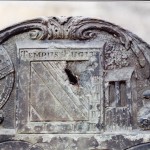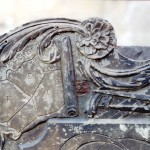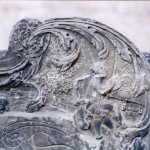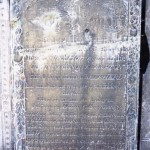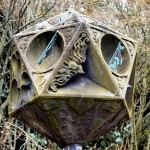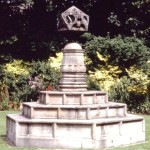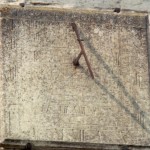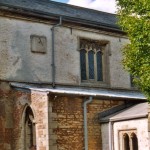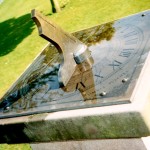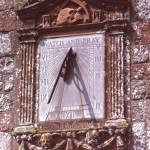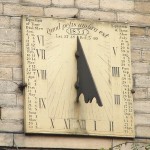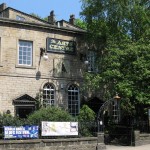I would not normally present a dial without a better photograph, but this one is interesting and seems ripe for research and restoration. Thanks to Mariette Voke for the original report in 1990, and to Ian Butson for more recent detailed recording.
The stone dial plate, with hollow moulded edges, is mounted on the south wall of the nave of this ‘redundant church’. It has two concentric square chapter rings, with upright but aligned Roman numerals. The outer ring has VI – XII – IV – VI, divided to half and quarter hours, while the inner ring is offset by just over four hours, with II – IV – XII – I. The latter scale seems to indicate the time at another location, possibly Bermuda or the more southerly West Indies, but the connection with this church is unknown. Across the centre are seven declination curves, with zodiac symbols between the two chapter rings, and a horizon line labelled accordingly above. Vertical lines cross the declination curves, probably azimuth lines, but these are not labelled. The iron gnomon carries a bar or peg nodus. There would appear to be an inscription, possibly ‘NOBIS …’ across the declination lines above the equinoctial line. There has once been an inscription across the top of the whole dial plate, but it is now indecipherable. The furniture is not totally eroded, and gentle cleaning, or even a photograph in grazing sunlight, might be fruitful.
